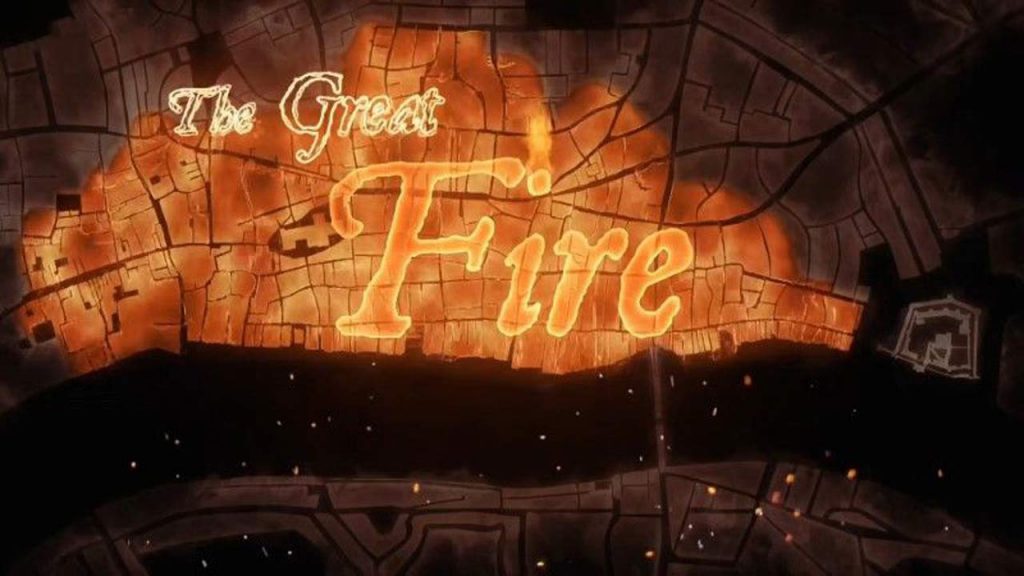The Great Fire: Dan Jones, Suzannah Lipscomb and Rob Bell take a fresh look at the Great Fire of London in 1666 by walking the actual route the fire took across the city, hour-by-hour and street-by-street, hoping to uncover what really happened during Britain’s worst inferno. The presenters investigate how the fire started, heading to Pudding Lane, site of the bakery where the blaze broke out. Dan and historian Dorian Gerhold place a temporary “blue plaque” on the very spot where the fire began.
The Great Fire of London was a major conflagration that swept through the central parts of the English city of London in 1666. The fire broke out on September 2, 1666, in a bakery on Pudding Lane in the city of London. It quickly spread, fueled by strong winds and the closely packed wooden buildings that made up most of the city at the time. The fire burned for three days, destroying much of the city and killing an estimated six to seven thousand people. The fire also destroyed many of the city’s landmarks, including St. Paul’s Cathedral, the Royal Exchange, and the Guildhall. It is considered one of the most devastating fires in the history of London.
The Great Fire
The fire started in a bakery in Pudding Lane shortly after midnight on Sunday 2 September, and spread rapidly. The use of the major firefighting technique of the time, the creation of firebreaks by means of removing structures in the fire’s path, was critically delayed due to the indecisiveness of the Lord Mayor, Sir Thomas Bloodworth. By the time large-scale demolitions were ordered on Sunday night, the wind had already fanned the bakery fire into a firestorm which defeated such measures. The fire pushed north on Monday into the heart of the City.
Order in the streets broke down as rumours arose of suspicious foreigners setting fires. The fears of the homeless focused on the French and Dutch, England’s enemies in the ongoing Second Anglo-Dutch War; these substantial immigrant groups became victims of street violence. On Tuesday, the fire spread over nearly the whole City, destroying St Paul’s Cathedral and leaping the River Fleet to threaten Charles II’s court at Whitehall. Coordinated firefighting efforts were simultaneously getting underway. The battle to put out the fire is considered to have been won by two key factors: the strong east wind dropped, and the Tower of London garrison used gunpowder to create effective firebreaks, halting further spread eastward.
The social and economic problems created by the disaster were overwhelming. Flight from London and settlement elsewhere were strongly encouraged by Charles II, who feared a London rebellion amongst the dispossessed refugees. Various schemes for rebuilding the city were proposed, some of them very radical. After the fire, London was reconstructed on essentially the same medieval street plan which still exists today.




